This new model is aimed even more at a nomadic audience, campers, and fans of small spaces, looking for thermal comfort without depending on the electrical network. What does this WAVE 3 offer compared to its predecessors and the competition? We have had it for several weeks, here is what we can say about it.
Design and features
Under its compact design, the EcoFlow WAVE 3 hides a real concentration of technologies. It has a cooling power of 6100 BTU (approximately 1800 W) and a heating capacity of 6800 BTU (approximately 2000 W), a significant improvement over the 5100/6100 BTU of the previous Wave 2. In concrete terms, this translates into a temperature drop of up to 8°C in 15 minutes in air conditioning mode, or conversely a rise of 9.5°C in 15 minutes in heating mode, according to the manufacturer.
This hot/cold duality makes the WAVE 3 a device that can be used all year round, capable of cooling a small room or a van in summer as well as warming them up in mid-season. On the power side, the WAVE 3 operates on mains power or wirelessly thanks to an additional 1024 Wh (LiFePO4) battery offering up to 8 hours of autonomy. This optional battery, featuring long-lasting LFP chemistry (over 4000 cycles at 80% capacity), fully recharges in approximately 2 hours. It accepts multi-source charging (820W max AC mains, up to 400W solar, 12/24V cigarette lighter socket) for greater flexibility when traveling.
Note that the battery connects via a proprietary cable to the air conditioner and even includes USB-A and USB-C ports (18W and 140W) to power other portable devices.
Without this battery, it is still possible to power the WAVE 3 on an EcoFlow electrical station (DELTA type) or any other 220V system, but this loses true portability. Despite its "portable" designation, the device remains imposing. It weighs about 15.3 kg without the battery, which adds almost 9.7 kg! That's almost 25 kg in total, which is not insignificant for transporting it in a van or a tent. EcoFlow has, however, provided integrated handles to facilitate handling, and the format remains relatively compact given the performance: 52 × 30 × 34 cm (L × W × H).
The WAVE 3 therefore fits easily in the trunk of a vehicle or under a van's mezzanine bed. Its design combines sturdy gray and black plastic, with a reinforced shock-resistant chassis and large ventilation grilles. These provide an air flow of 330 m³/h, an increase compared to the Wave 2, in order to efficiently circulate the air in volumes up to approximately 17 m² (i.e. a small studio, or the interior of a large van).
The refrigerant used is R290 (propane), a more environmentally friendly gas than traditional fluorinated fluids, which reduces the environmental impact of the air conditioner. In operation, EcoFlow announces a noise level oscillating between 44 dB and 58 dB depending on the mode. In practice, this means that in “Standby” mode, the WAVE 3 is discreet, around 44-45 dB. By pushing the power to the maximum, the noise rises to around 58 dB or even a little more (our measurements are around 60 dB at 1 m). This is noisier than the Wave 2 which peaked at around 53 dB. In other words, at night you will have to favor the silent mode, even if it means losing cooling performance.
Finally, the EcoFlow WAVE 3 is a connected device since it has integrated Bluetooth and Wi-Fi, which allows complete control via the EcoFlow mobile application. The physical control panel, located on the top, gives access to the basic functions (power on, mode selection, temperature and fan speed adjustment, and a button to force the draining of condensed water). For everything else, the application takes over: you can monitor the temperature, battery status, program a time slot, and choose from all the operating modes (Climate, Heating, Eco, Standby, Dehumidification, and a "Pet Care" mode). This last mode is new and aims to maintain a comfortable temperature for an animal left inside, by automatically triggering cooling or heating if the space in which it is located exceeds a certain threshold. However, EcoFlow remains cautious about this function: the Wave 3 will never be able to replace human supervision for the safety of animals in case of extreme heat.
The app therefore provides a real plus for mobile use, allowing you to control the device remotely and receive alerts in the event of a full tank or abnormal temperature. The downside is that some features are only accessible via the app. The interface on the device remains basic, which can frustrate users who prefer to avoid their smartphone.
Installation and Use
Installing the EcoFlow WAVE 3 remains generally simple. The system works with two insulated air ducts: one is used to draw in outside air, the other to expel the hot air produced by the compressor. This dual-flow principle avoids creating a vacuum in the room, which improves cooling efficiency compared to traditional single-hose portable air conditioners.
In a small room such as a bedroom or office of less than 15 m², installation can be done in a few minutes. Simply position the air conditioner near a window or patio door, and run the two ducts through it using the supplied adapter or, if necessary, with a little DIY (foam sheet or textile seal). This flexibility is appreciable and allows the WAVE 3 to be used without drilling or permanent installation. In our case, by positioning the ducts towards a half-open window and sealing the rest with an insulating seal, the system proved to be perfectly functional.
Once in place, operation is very simple. The device can be used on mains or battery power (optional). The physical control panel allows you to turn on the device, choose the mode (air conditioning, heating, eco, standby, dehumidification) and adjust the temperature. For finer adjustments and remote monitoring, the EcoFlow application takes over, with the possibility of controlling the device via Wi-Fi or Bluetooth.
In a 12 m² room located under the roof, we were able to measure a drop of 7 °C in less than 20 minutes in intensive mode, with an outside temperature of 26 °C. The device manages to maintain a stable temperature around 20 °C in eco mode, which is more than enough for occasional domestic use, especially at night. The noise, in standby mode, remains very contained (around 44-45 dB), allowing you to sleep with the device in operation without any real discomfort.
The heating mode works with the same logic. Used in the early morning in a cool room at 14°C, the WAVE 3 raised the temperature to 20°C in about twenty minutes. This additional heater is effective at cutting through the mid-season chill, although the sensation of heat is more localized than with convection heating.
In a tent, the system also works, provided you provide ventilation to route the pipes. In a Quechua 2s tent equipped with a large zippered opening, the two pipes could be easily removed, one to the outside for the discharge of hot air, the other for the suction. The cooling effect is immediate, especially in the evening or during an afternoon nap. Be careful, however: since a tent is poorly insulated, maintaining a constant temperature depends a lot on the external conditions. At 27°C in full sun, the device provides occasional relief, but it cannot permanently air-condition the entire space without heat loss.
Overall, in modest, well-ventilated, and semi-enclosed spaces, the WAVE 3 gives good results. It is more than just a fan: it provides real thermal comfort, with powerful and regular airflow. And since it can also function as a dehumidifier, it significantly improves the atmosphere in humid or poorly ventilated environments.
Measured performance, autonomy: promises kept?
First of all, the cooling power of 6100 BTU is indeed noticeable compared to previous models, as we were able to observe this rapid cooling announced as explained above. Of course, the greater the difference with the outside, the more complicated the task becomes; in the middle of a heatwave, the Wave 3 will have to operate continuously and will sometimes only be able to contain the temperature rather than drastically drop it. Nevertheless, to quickly cool a small space, this portable air conditioner excels. Similarly, in heating mode, its 2000 W output allows it to heat the air significantly faster than a simple electric space heater. In 15 minutes, you can actually gain several degrees in a reduced volume.
When it comes to battery life, you have to separate theory from practice. EcoFlow advertises “up to 8 hours” of battery operation, and this is achievable, provided you use Eco mode at a moderate temperature setting. In Eco mode (energy saving), the compressor runs intermittently and the fan runs at a slower speed, which effectively extends battery life. On the other hand, if you use full power (Max mode) continuously, don't expect to last more than 2 to 3 hours on the 1024 Wh battery!
The full 2-hour recharge on the mains is a real asset: for example, in a van, while you're driving, the battery can recharge for the next stop. Better still, with the 800 W alternator charger (optional) or a dual solar + AC power supply, you can recharge from 0 to 100% in just 75 minutes.
The air conditioner's power consumption, meanwhile, reaches around 600 to 700 W at cruising speed (cold or hot). This is the power consumption measured on the mains in normal mode, thanks to the relatively efficient heat pump technology (coefficient of performance around 2.6 in cooling). However, at peak times when the compressor starts or during certain phases, peaks of around 800-850 W have been observed. It is therefore necessary to have a source capable of providing this power (generator, sufficiently sized external battery or minimum 230 V 4 A socket). For off-grid solar use, plan for a good reserve or a substantial installation, because 600-700 W over several hours can drain small batteries very quickly. In Eco mode, average consumption drops drastically (the compressor stops at times), but this is accompanied by a drop in performance. Moreover, in extreme conditions (heatwave or intense cold), this eco mode will prove insufficient to maintain the set temperature. It will then be necessary to return to normal mode, at the cost of increased consumption.
The ubiquitous EcoFlow ecosystem
EcoFlow has made a name for itself with its portable energy stations and solar batteries. The WAVE 3 is part of this strategy by completing the “nomadic home” ecosystem. It is fully compatible with other EcoFlow products: for example, it can be connected to a DELTA or RIVER station to power it directly with 220 V if you do not have the dedicated battery. The brand even offers bundles combining the Wave 3 with an energy station for those who want a turnkey kit (a DELTA 2 Max or DELTA 3 Plus can power the air conditioner for several hours).
The EcoFlow application centralizes all these devices: you can monitor at a glance the consumption of the WAVE 3, the battery level of the station and optimize your solar installation accordingly. The fact that the WAVE 3 uses the same XT150 charging port as the EcoFlow batteries allows for a certain interoperability: for example, it is possible to recharge the air conditioner battery on a DELTA Pro via the additional battery output, or to plug the WAVE 3 directly into a 12V/24V car cigarette lighter socket (with the appropriate adapter) to operate it while driving.
It should be noted that unlike the Wave 2, this version offers (finally) a “ventilation only” world that allows air to circulate without activating the compressor, which is particularly useful for ventilating a room or a tent without consuming as much energy as in air conditioning or heating mode. This mode consumes around 24 watts, which makes it a very economical option for extending battery life or simply improving thermal comfort without active cooling.
The WAVE 3 is therefore intended to be a versatile device, not just for leisure. With its dehumidifier mode, its ventilation only, and its heating function, it can be used as a backup in the event of a domestic emergency (boiler or central air conditioning failure) to heat a small room or cool a bedroom. In a vanlife situation, the Wave 3 is particularly relevant for trips to regions with contrasting climates. During the day, it will help keep the van cool when you set up somewhere (provided you seek shade: as we have seen, in full sun it will be ineffective on its own). At night, it will allow you to sleep without suffocating, or not shiver in mid-season. Its portable format means it can also be taken out of the vehicle and air-conditioned in a tent or closed awning for a few hours.
Strengths and weaknesses
The EcoFlow WAVE 3 won us over with several advantages. First, its cooling and heating performance is there. It delivers ultra-fast cooling, capable of dropping the temperature by nearly 8°C in just 15 minutes. With its 6800 BTU in heating mode, it also provides appreciable four-season comfort, which is rare for a portable device. This hot/cold versatility makes it almost a small portable air conditioner that can be used all year round.
Then, the WAVE 3 stands out for its autonomy, offering the possibility of operating for up to 8 hours on battery power, which gives real freedom for off-grid areas. Combined with a solar installation, you can imagine camping for several days in autonomy while benefiting from a temperate climate in your vehicle or tent. Express recharging of the battery in 2 hours (or even 1 hour 15 minutes with solar + mains) is another strong point for quickly regaining autonomy between two uses.
Also note the ecological concern given to the choice of R290 refrigerant, much less polluting for the planet than conventional fluids. Compared to other portable solutions, the Wave 3 offers improved airflow (optimized vents, dual duct) that ensures more uniform and efficient cooling.
The device's design is well thought out for mobile life, it remains compact (approximately 52 × 30 × 34 cm) and relatively robust thanks to a casing that inspires confidence with its shock-resistant coating, and the integrated handles make it easy to carry despite the weight.
Finally, despite its power, the device is relatively quiet in standby mode (approximately 44 dB), which makes it usable at night without disturbing sleep too much. This discretion in night mode, combined with the dedicated Standby function, is a real advantage over some noisy competitors. Furthermore, EcoFlow has taken care of connectivity with a smart mobile application that allows you to control everything remotely via Bluetooth or Wi-Fi and even program on/off schedules.
Despite its qualities, not everything is perfect and you have to consider the compromises and disadvantages of the WAVE 3 before cracking. The first obstacle is unsurprisingly its price because EcoFlow positions its high-end air conditioner with a price of 899 euros alone, that is to say without the battery which is sold separately for 699 euros. Fortunately, a Wave 3 + battery pack is available for €1,499.
Installing the system can also be difficult with its large air hoses; the WAVE 3 requires careful consideration of how to position it. In small spaces, these ducts limit options and can be cumbersome. It's often necessary to improvise an exit to the outside (half-open window, etc.), which isn't always practical or aesthetically pleasing. For occasional camping use, this isn't a deal breaker, but in a very compact van, you quickly find yourself juggling these tubes, temporarily attaching them here and there.
The weight of the air conditioner is also worth considering, with its 15.5 kg empty (and more than 25 kg with the battery), which is not nothing to move for a device that is supposed to be portable! EcoFlow has certainly provided handles, but we would have appreciated them folding on the sides for a better grip: as it is, transporting the Wave 3 alone on uneven terrain or hoisting it into a trunk requires a bit of effort.
While the WAVE 3 knows how to stay quiet in silent mode, the same cannot be said at full power. The noise in Max mode reaches a level that can become annoying over time, especially in a confined space. It approaches or even exceeds 58-60 dB, which corresponds to sustained background noise. This is an inherent flaw in the technology, but those who appreciate quiet should be aware: in intensive use, the Wave 3 can be heard!
On the energy side, even if the efficiency is good, the power consumption remains high in conventional air conditioning mode: around 1800 W of cooling delivered for 700-800 W absorbed. In an off-grid context, this means that a solid energy reserve is required.
Finally, a quick word on the water drainage system, which requires an additional accessory (container or hose) for prolonged use. Forgetting to empty the tank or plug the drain can interrupt the air conditioning at the wrong time.
One last point to remember: the WAVE 3, despite all its qualities, will not replace a fixed air conditioning system for intensive domestic use. If your goal is to continuously cool a living room or sustainably heat a large room, it is neither designed nor optimized for that. Its purpose remains nomadism and occasional backup.

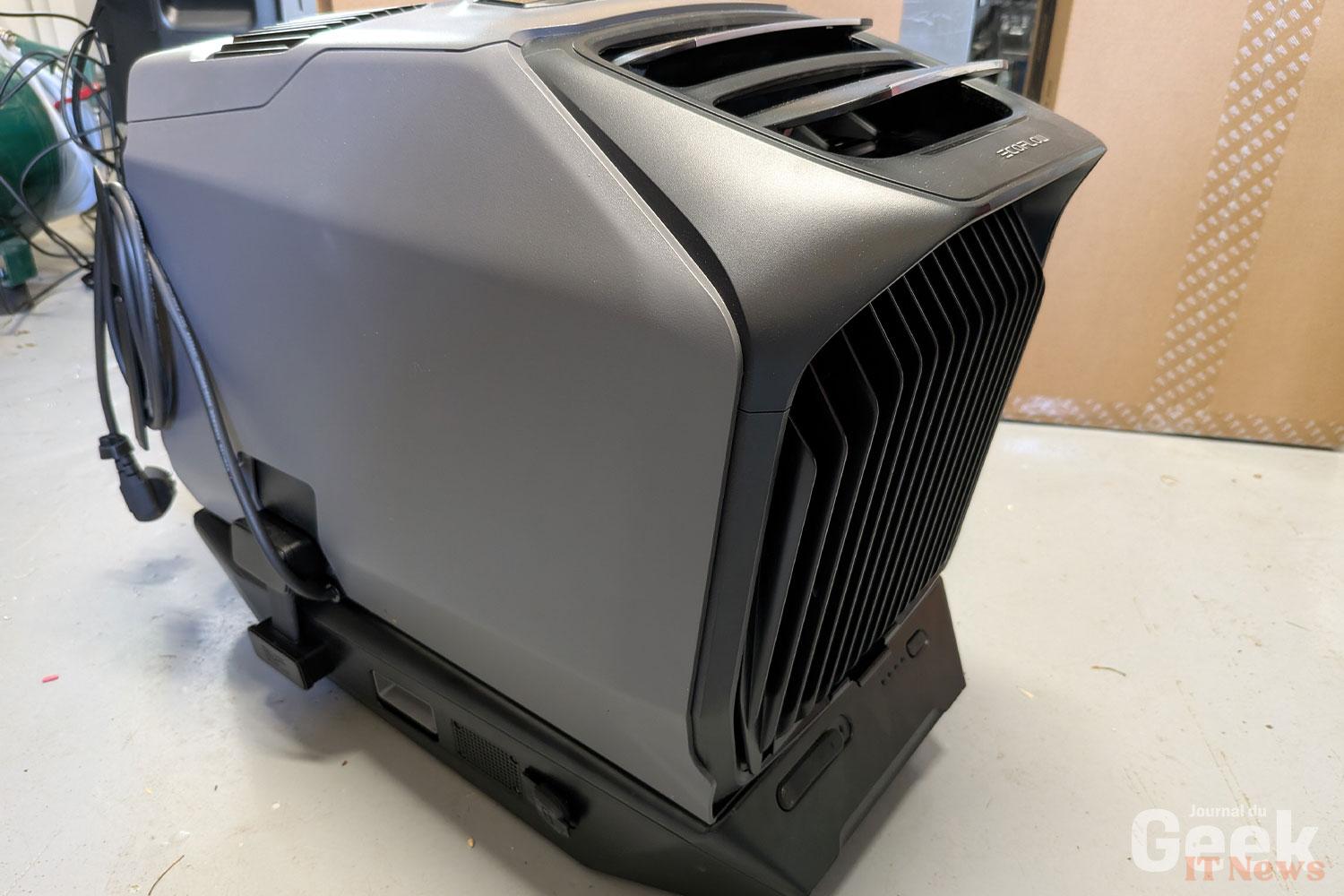
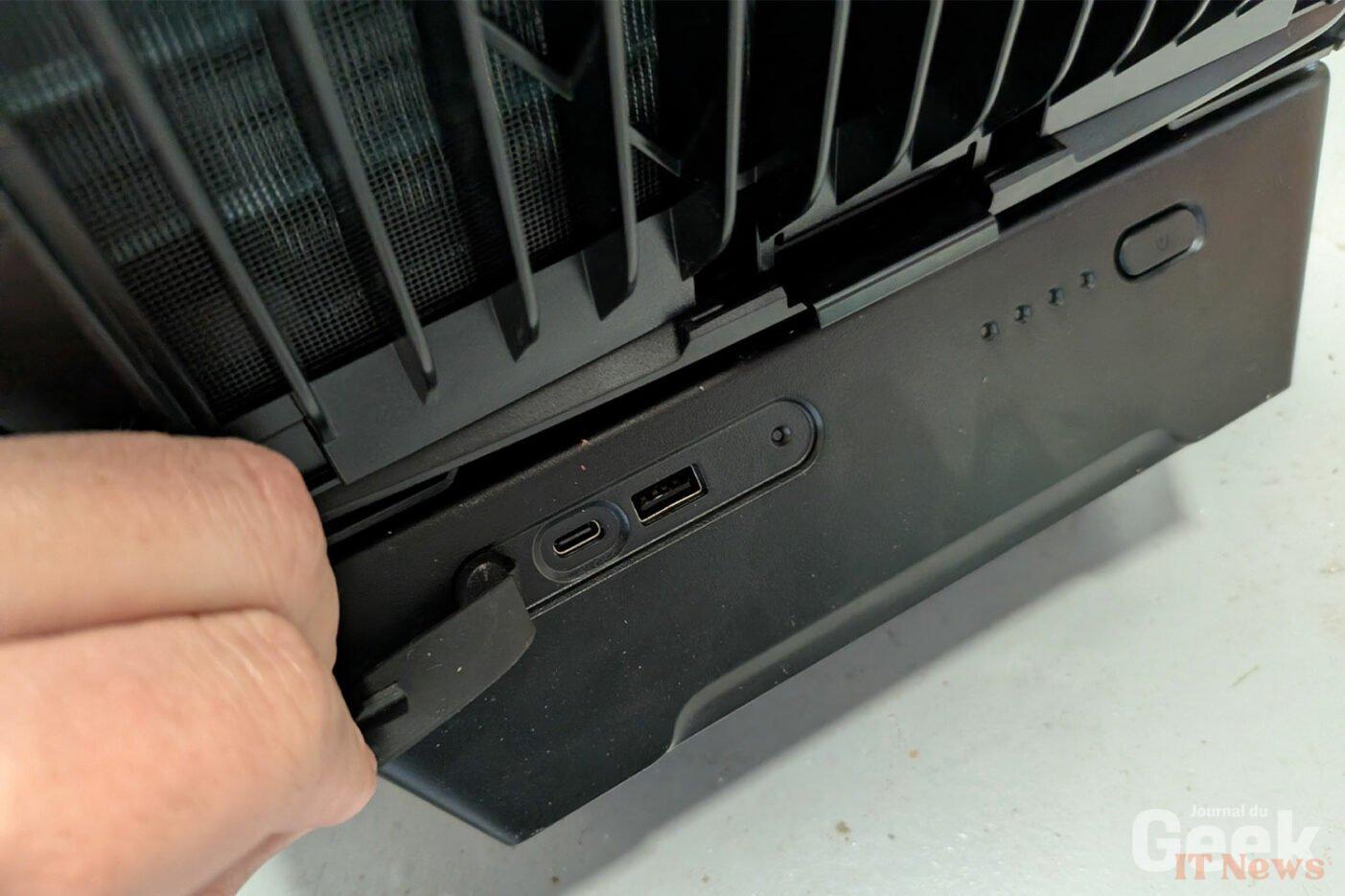
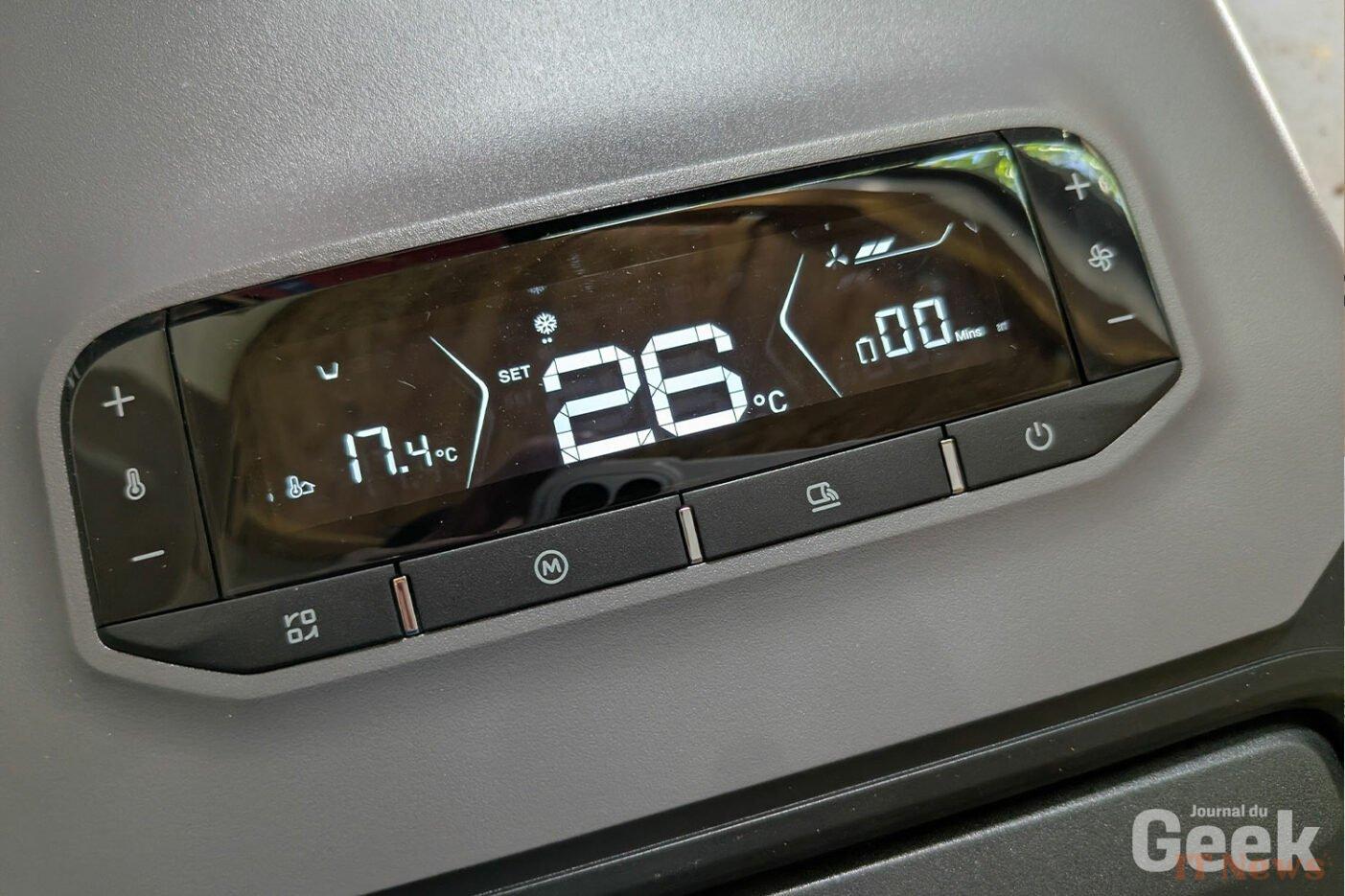
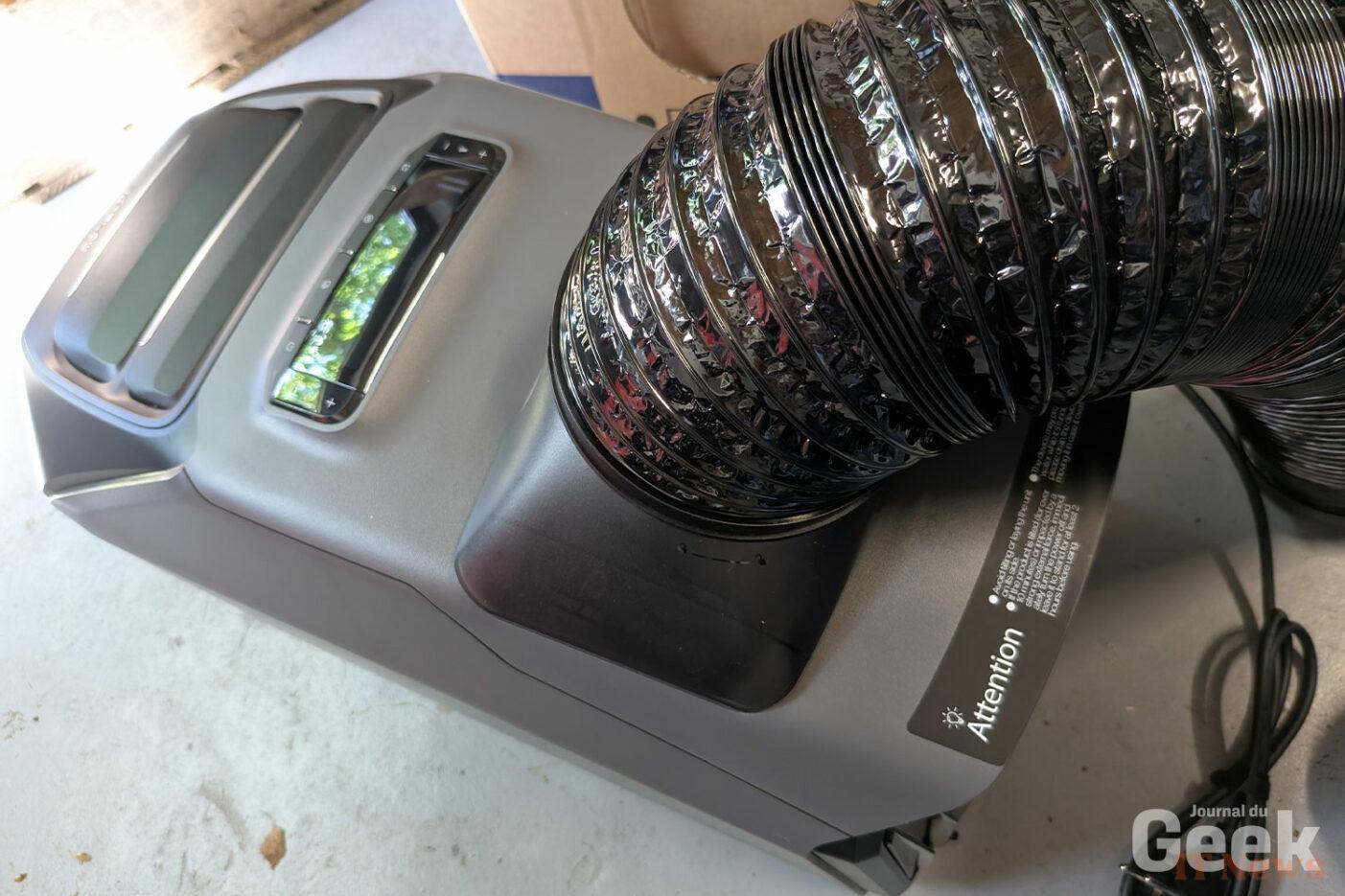

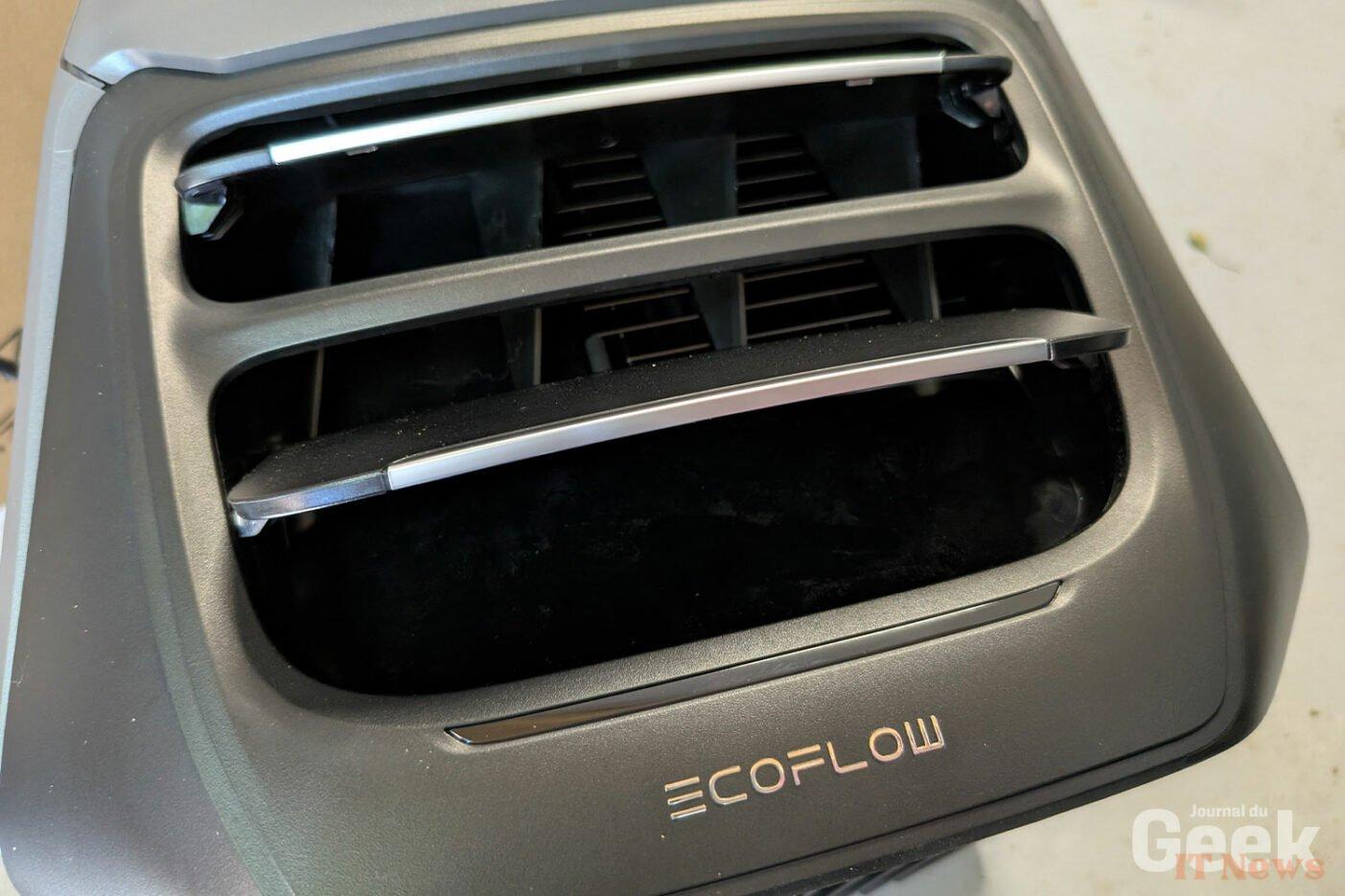

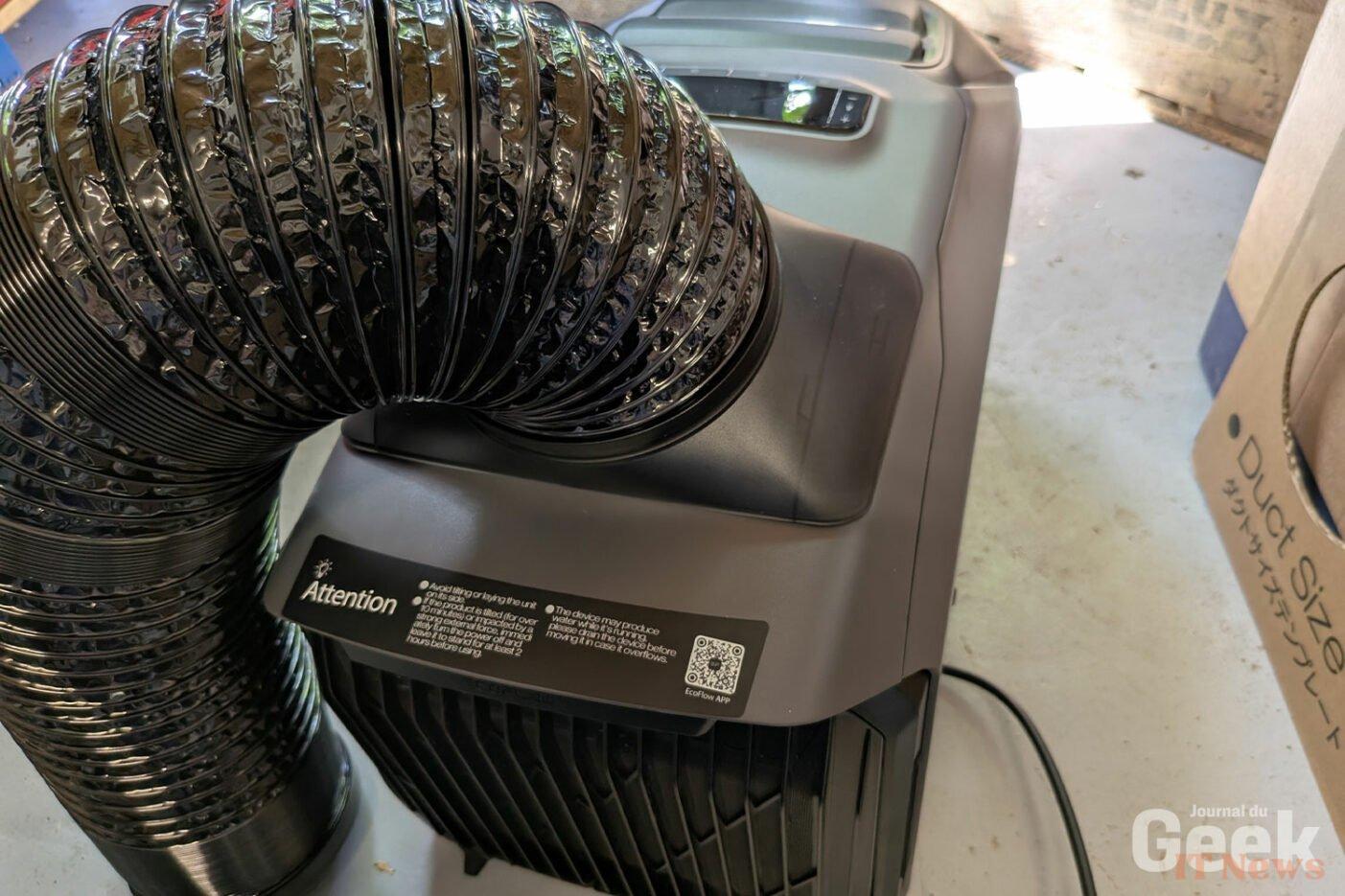


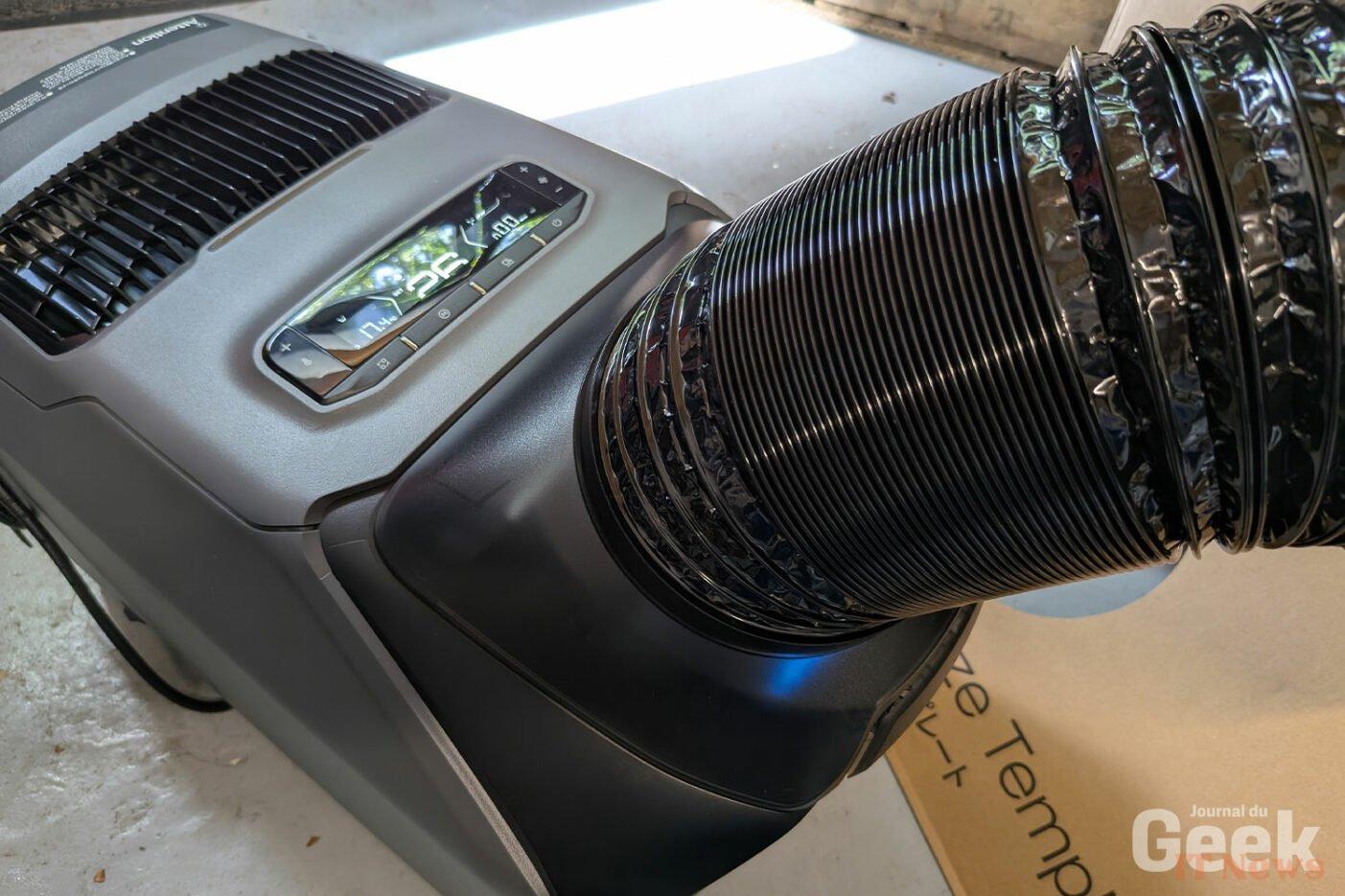
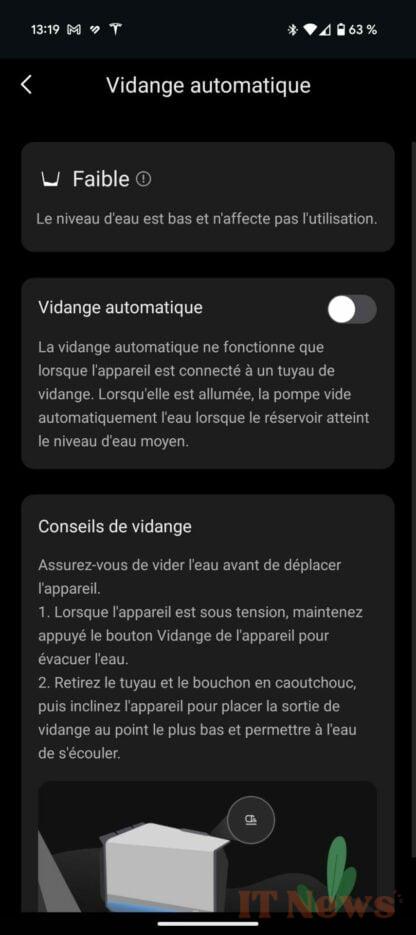

0 Comments